Part of a series of articles titled The History of Slavery in St. Louis.
Article
Black Life in St. Louis During Reconstruction
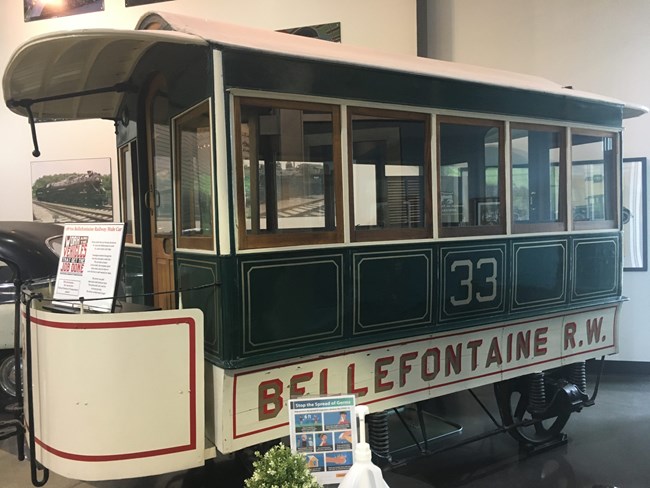
National Museum of Transportation
Fighting Racial Discrimination in Public Transportation
Many students are familiar with Rosa Parks’s protest of racial segregation on a public bus in Alabama in 1955. However, such protests took place in St. Louis nearly 100 years earlier during the Reconstruction era. “Reconstruction” was the effort to rebuild the nation after the Civil War.
During Reconstruction, three constitutional amendments expanded citizenship and voting rights for Black Americans. Despite these protections, Black St. Louisans continued to experience racial discrimination in public spaces. St. Louis city horse-drawn streetcars did not allow Black riders to sit inside the cars.
Caroline Williams was pregnant and holding a baby when she attempted to find a seat inside the Bellefontaine Railway Company’s streetcar. The conductor refused to allow her a seat. Williams was then thrown off the car and injured. She filed a lawsuit in 1867. Williams won her case, but the jury only awarded her $1 for her troubles.
Racial segregation in St. Louis streetcars was prohibited the next year, but conductors regularly disregarded the rule. Charlton Tandy, a prominent Black civil rights leader in St. Louis, led an organized boycott of the streetcars in 1870. At one point he even stopped a trolly and held the horse’s reins until all Black passengers were allows seats inside the car.
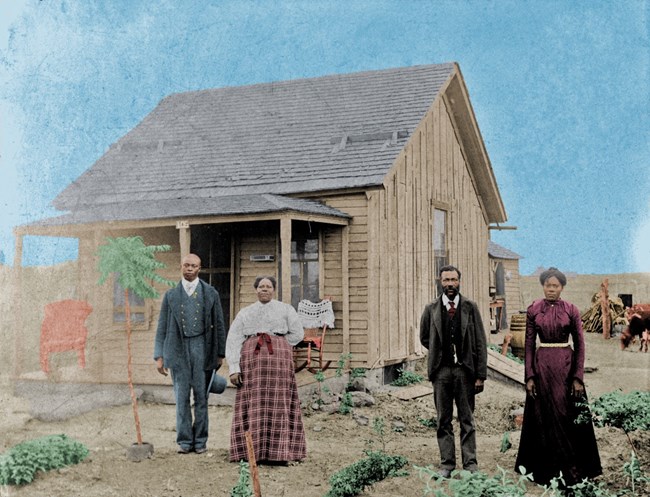
Library of Congress, colorized by Nick Sacco/History Beyond Black and White
The Exoduster Movement
White violence and indifference to civil rights defeated efforts to promote civil rights for Black Americans during Reconstruction. By 1879, many Black Southerners did not see a good future at home and decided to migrate North and West. Many of these migrants wanted to move to Kansas and establish self-sustained Black communities. They received the nickname “Exodusters” for their efforts at leading an exodus out of the South.
Many Exodusters traveled through St. Louis on their way to Kansas. About 20,000 Exodusters arrived in St. Louis in 1879 and 1880. While some of these migrants decided to stay in St. Louis, many remained stranded in the city against their wishes because White steamboat operators did not want to carry them along the Missouri River. Furthermore, the city of St. Louis did little to provide aid to these refugees.
St. Louis’s Black community stepped up to provide aid. Reverend John Turner led a group called “The Committee of Twenty-Five” that solicited funds to provide food, shelter, and clothing to the Exodusters. Charlton Tandy helped run another organization called the “Colored Refugee Relief Board” for the same purpose.
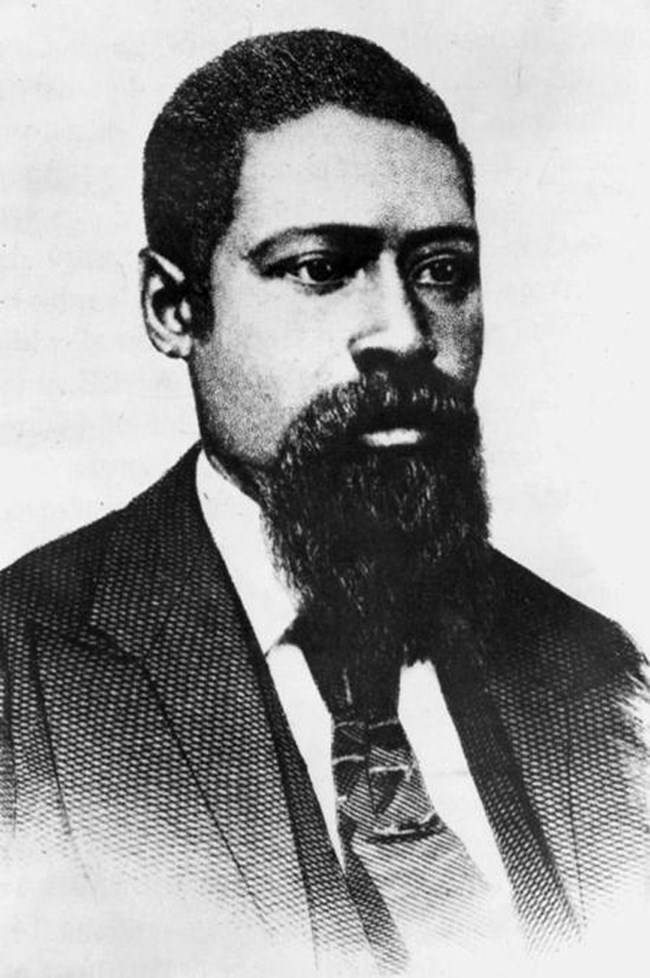
State Historical Society of Missouri
Slavery and Freedom in St. Louis: James Milton Turner
James Milton Turner (1839 or 1840–1915) was a prominent advocate for public education in Missouri. Born enslaved in Kirkwood, Turner was a gifted student. He was only fourteen years old when he briefly attended Oberlin College in Ohio, the first college in the country to admit Black students.
In 1865, Turner served as Governor Thomas Fletcher’s Assistant Superintendent of Schools. Turner worked to establish schools around the state for Black Missourians. He also established a “normal school” for teachers so that young Black children could begin learning how to read and write.
Turner also co-founded the Missouri Equal Rights League, which pushed for Black Missourians to get the right to vote. He was known as a talented public speaker. At a convention of Black leaders in St. Louis, Turner once argued that the right to vote for Black men “rightfully and logically belongs to us as freedmen” who had supported the Union during the Civil War.
In 1871, President Ulysses S. Grant appointed Turner as Minister to Liberia. Turner was the second Black politician to serve as a U.S. minister to another country. As Minister to Liberia, Turner brokered a peace treaty with the Grebo, an Indigenous ethnic group, which brought some stability to the region.
Like other Black leaders in the area, Turner supported Exodusters traveling through St. Louis, creating the Colored Emigration Aid Association for this purpose. After his 1915 death, Turner was buried at Father Dickson Cemetery in South St. Louis County.
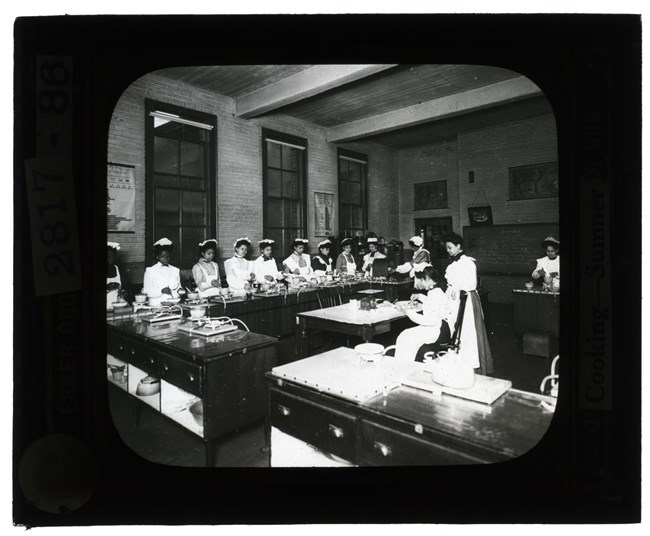
Missouri Historical Society
Establishing Sumner High School
The Missouri State Legislature required public school districts to provide opportunities for Black children to receive an education shortly after the Civil War in 1865. It took another ten years for the St. Louis Public School District to establish a Black high school, however. Sumner High School was the first high school opened for Black students west of the Mississippi River. It was named after a White antislavery Senator from Massachusetts, Charles Sumner, and remained the only Black high school in St. Louis until 1927.
Charlton Tandy and other Black leaders complained that the original location of the high school on 11th Street was surrounded by industrial pollution and noise. These protests led to the school’s relocation in the 1880s to 15th and Walnut. Students participated in numerous community projects, including fundraising efforts for the victims of the St. Louis Tornado of 1896 and a large exhibit at the 1904 World’s Fair at Forest Park.
Sumner High School remains open today at 4248 Cottage Avenue. Numerous celebrities have attended Sumner High School, including tennis star Arthur Ashe, Rock and Roll musicians Chuck Berry and Tina Turner, opera singers Robert McFerrin and Grace Bumbry, and comedian Dick Gregory.
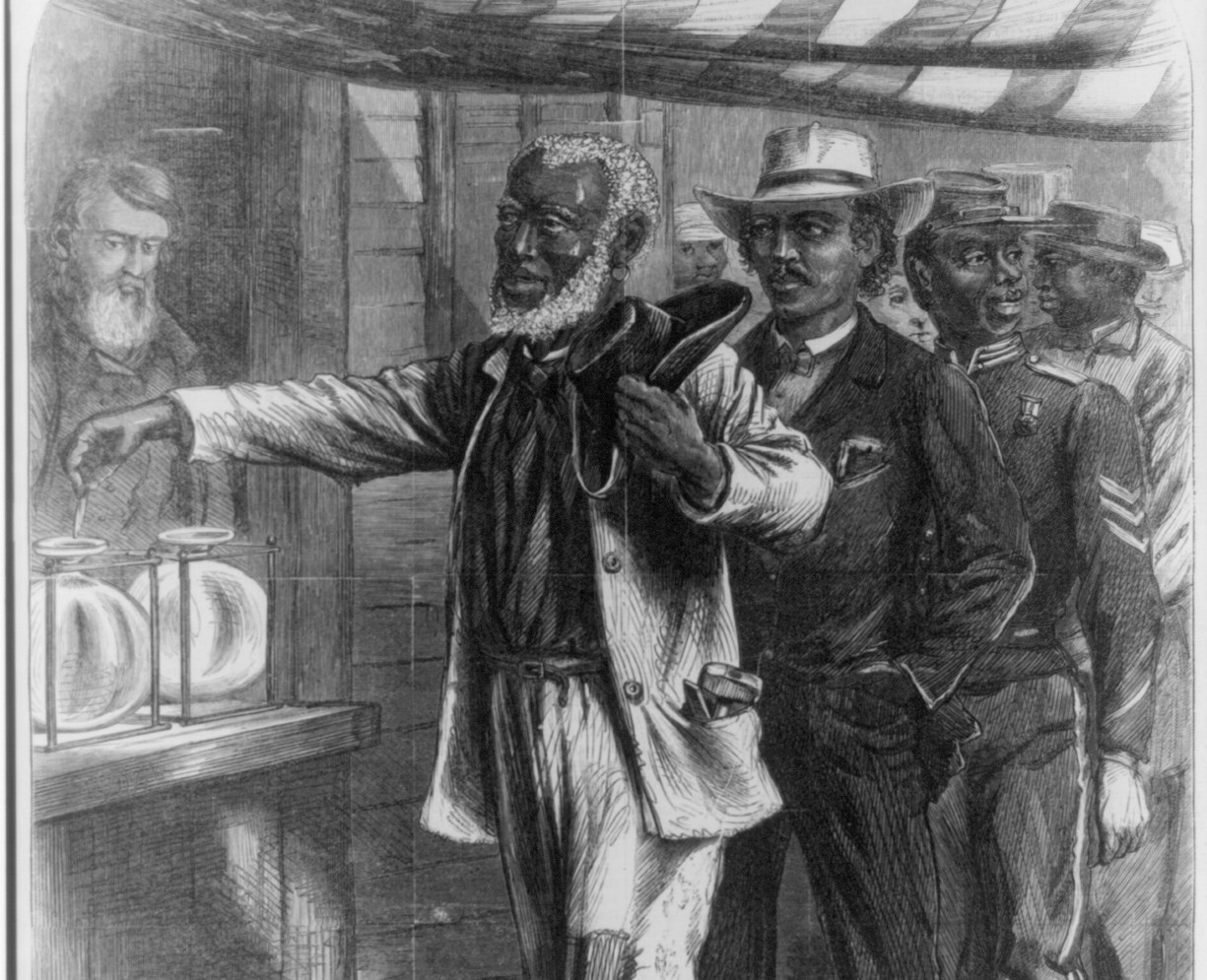
Library of Congress
Last updated: November 2, 2023
